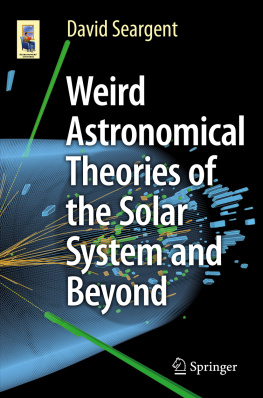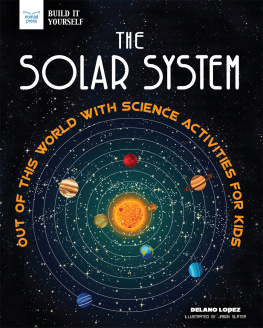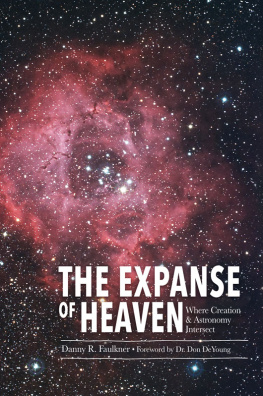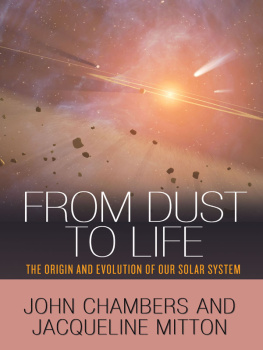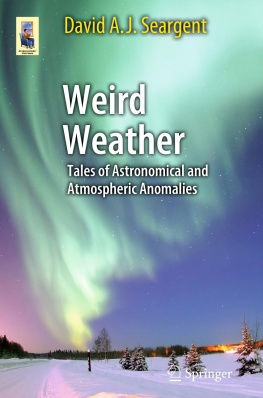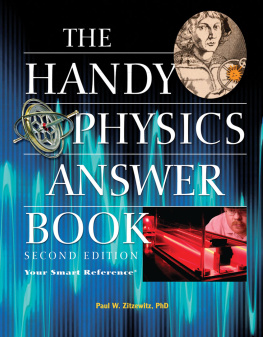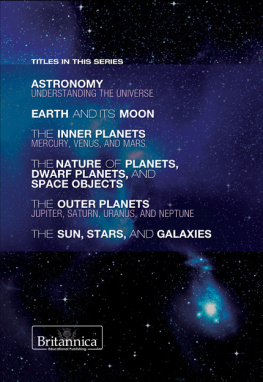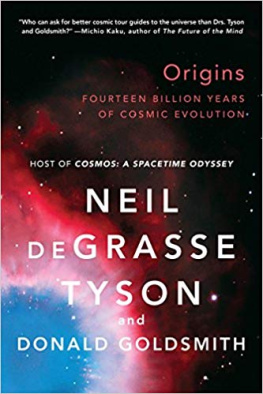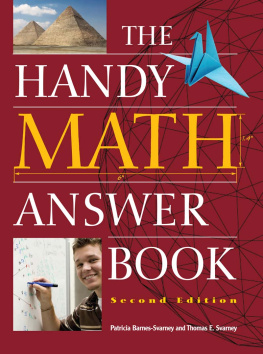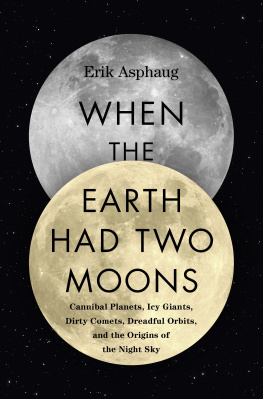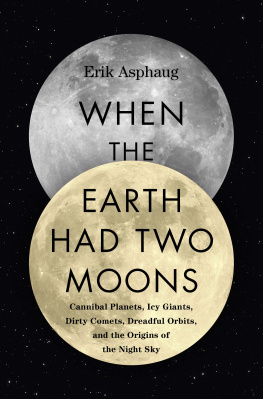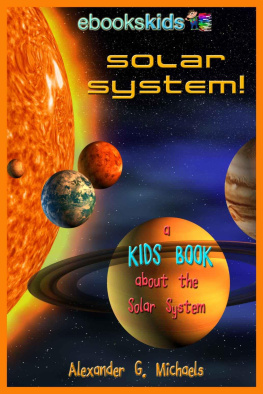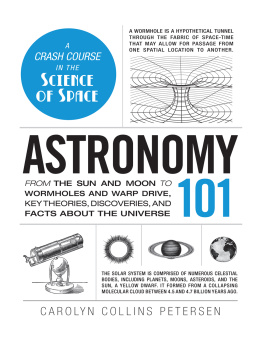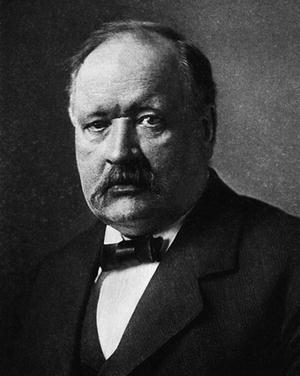If the advance in astronomical knowledge acquired during the course of recent decades has taught us anything at all, it is surely the undeniable fact that we are an integral part of the universe. We are not isolated from the stars and the galaxies . We might even grudgingly admit that the astrologers got it a little bit right after all, though not in the manner that they would have us believe. The position of the constellations and the planets at our birth might not determine whether we will be happy and outgoing or moody and a general pain to work with, but the nature of the universe at large played a very large part in you and I being here at all. The picture that has emerged from relatively recent astronomical research is one in which the entire cosmic environment has played and continues to play a vital and indeed determining role in the existence of life here on Earth. The nature of our home planet, our home star, our location in a relatively quiescent region of our home galaxy and even the immediate cosmic environment of this galaxy itself (viz. its location in a small galaxy group rather than a large galaxy cluster where collisions between major systems tend to strip these of the interstellar material so important to maintain a healthy rate of star formation and to ensure plenty of material for the accumulation of planetary companions of new stars) all conspire to secure our home in the universe.
But what of life itself? Does the universe connect with life on Earth in ways beyond just determining the suitability of its terrestrial home? Could life itself have a cosmic connection? Some daring scientific thinkers theorize that indeed it could!
The Panspermia Hypothesis
Early last century, in 1903 to be more exact, Swedish physicist and founder of physical chemistry, Svante Arrhenius (18591927) put forward the radical hypothesis that life is indeed cosmic. He theorized that the seeds of life are carried through space, taking root on any suitable planet upon which they might land. Like grass seed carried in a prairie wind, the germs of life distribute through the universe. Actually, Arrhenius was not really the first to come up with this proposal. As long ago as the fifth century BC, the Greek philosopher Anaxagoras mentioned the idea in his writings, as did the more recent thinkers J.J. Berzelius (in 1834) , H.B. Richter (1865) and H. Von Helmholtz in 1879. However, it was through the developed formulation of Arrhenius that the idea truly blossomed into a scientific hypothesis, known as panspermia (Fig. ).
Fig. 1.1
Svante Arrhenius circa 1910 ( Courtesy : German Wikipedia)
This blossoming came forth in Arrhenius article The Distribution of Life in Space , published in 1903, in which he argued that microscopic organisms are theoretically capable of being transported through space by the pressure of stellar radiation. The existence of radiation pressure and its ability to transport very small particles is well established. The anti-solar dust tails of comets and the clearing of star -forming nebula in the near vicinity of bright young stars are proof enough of that, so the basis of the hypothesis rests squarely on good science. Arrhenius argued that particles smaller than 1.5 m in diameter would be susceptible to this pressure and could be accelerated to high speeds away from the Sun or similar stars . Larger particles are less affected however, so the process could only work for the smallest biological entities. Nevertheless, as bacterial spore fall within the acceptable size limit, and as these can be wafted high into the atmosphere of Earth, it seems reasonable to expect that a certain percentage of these spore could be blown away from the upper atmosphere by the pressure of sunlight and accelerated through the surrounding void of outer space.
Of course, what applies to Earth presumably applies to any life bearing planet. In effect, a planet rich in bacterial life could be thought of as possessing what we might call a bacterial tail: a plume of spore sweeping away from the planet in a direction opposite to that of the central star . Any planet orbiting outside of the biologically active one would (other things, such as orbital inclination, being equal) periodically pass through this tail, at each passage sweeping up some of the spore which would then filter slowly down through its atmosphere, eventually settling on the planetary surface. Assuming that conditions on that surface were not too hostile, some of these spores might survive and multiply, eventually resulting in a flowering of life on that planet. Eventually, presumably after the passage of many millions of years, the seeded planet would have developed such a teeming biosphere that it would be shedding its own microorganism spore into spacemaybe seeding another world beyond its orbit. In this way, as science writer Poul Anderson long ago remarked, a single original life-bearing planet could theoretically seed an entire galaxy. All that is needed is plenty of time and the ability of a percentage of dormant microbial spores to survive the rigors of space for eons of time while remaining capable of revival upon reaching a friendly environment.
Time is something that the universe has in abundance, but the ability of spore to remain viable over the required periods of time, especially considering the constant exposure to cosmic radiation and the other hazards of space, is certainly questionable. The reaction of most scientists was one of strong doubt that bacterial spore could make the journey from one planet to the next without suffering fatal damage to their DNA. So, while it is probably quite widely agreed that spore are indeed wafted into outer space from the upper atmospheres of Earth and other biologically active planets, the general consensus of opinion has traditionally been skeptical that any of these organisms could survive long enough in the space environment to allow this form of panspermia (now known as radiopanspermia ) to work.
Some critics also raised the objection that the hypothesis does not account for the original genesis of life. Actually, given the belief in eternal matter and the sort of steady state universe prevalent in Arrhenius day, it might then have seemed legitimate to suggest that life never had a beginning. Like the universe itself, it has always been here! Such an escape route is not available nowadays, in view of Big Bang , cosmic inflation and such like.
Also, for the hypothesis to be capable of accounting for life on Earth, it must assume a biologically active Venus. If Earth picked up spores on their journey away from the Sun , they could only have come from Venus or Mercury (or from comets and Sun-approaching asteroids, but that hypothesis is a later addition to the original). Mercury does not appear a likely source and, in any case, transportation from there would involve a longer trip and a consequent multiplication of the dangers encountered along the way.
Another difficulty is raised by the fact that radiopanspermia relies on the repulsive force of stellar radiation. This means that it is not a good way of accounting for life on any Earthlike inner planet of any Solar System. Planets such as Earthtraditionally considered to be the most likely places where life might be found (not surprisinglyafter all, we are here!)exist in regions where the pressure of stellar radiation is quite strong. Therefore, one would expect bacterial spore to be blown away from those planets deemed to be the potentially most life-friendly.

